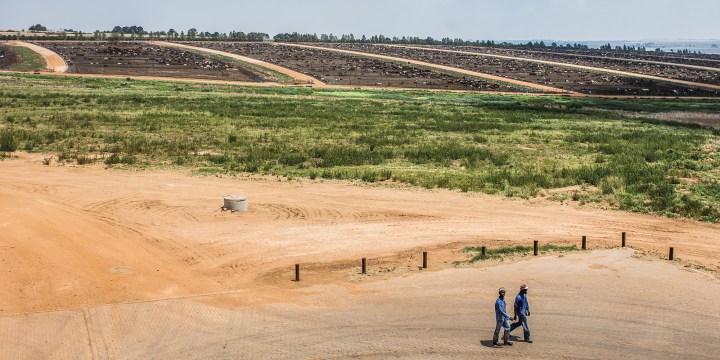BUSINESS MAVERICK
Government bailouts and suspension of loans to farms improve Land Bank’s financial position

A small silver lining is that the extent of the Land Bank’s financial losses is declining: The bank pencilled in financial losses of R1.06bn in 2021 — lower than the R1.28bn of 2020 and R2.27bn in 2019.
The Land Bank has recorded another significant financial loss despite efforts by its management and board to turn the state-owned agricultural bank around.
The century-old Lank Bank expects to record a financial loss of R1.06-billion for its 2021 financial year, the third successive year in which the bank has failed to turn a profit.
The Land Bank’s financial position was unveiled by its management and board on Tuesday in Parliament, where lawmakers were informed about the bank’s turnaround strategy and talks with lenders to save it from collapse.
A small silver lining is that the extent of the Land Bank’s financial losses are declining, as the bank pencilled in financial losses of R1.28-billion in 2020 and R2.27-billion in 2019.
The Land Bank provides loans to emerging and established farmers and offers them insurance products for agricultural-related events such as drought and disease. The Land Bank is important for SA’s food security system as it provides 28% of the country’s agricultural debt.
The latest financial losses are a further blow to the Land Bank, which faces a financial crisis so daunting that it cannot afford to extend new term loans to farmers.
The Land Bank can only service the financial needs of its existing clients, providing them with funding for their seasonal farming operations, especially during crop planting and harvesting.
Improved financial position
The suspension of new term loans to farmers has helped the Land Bank to preserve cash on its balance sheet, helping it to also improve its liquidity position. The Land Bank’s cash on hand reached R5.6-billion in 2021, a marked improvement from R700-million in 2020 and R3.2-billion in 2019.
The Land Bank’s financial position was also improved by the R3-billion bailout that the government extended to it in September 2020. This funding helped the Land Bank pay down debt. Former finance minister Tito Mboweni came to the rescue of the Land Bank again as he awarded the bank a R7-billion bailout, which will be paid out over the next three years.
The government bailout and decision to suspend the extension of new loans to farmers has not only helped the Land Bank arrest swelling financial losses, but has also improved its liquidity position.
Banks are required by regulators and central banks to have enough capital in reserve to handle a certain amount of financial losses before being at risk of becoming insolvent. This is known as a capital adequacy ratio, which is expressed as a percentage. The Land Bank’s ratio (without financial support from the government or the taxpayer) improved to 8.8% in 2021 from 4.5% in 2020. And when the government’s financial support is included, the Land Bank’s ratio grows: 14.3% in 2021 and 9.4% in 2020.
But its loan book is still under pressure.
Non-performing loans almost doubled to 27.8% in 2021 from 16.8% in 2020. Non-performing loans have soured because farmers have not serviced them for more than 90 days. In banking circles, rising non-performing loans are bad news because banks generate their profits from the timely repayment of loans by borrowers with interest.
The Land Bank is buckling under the weight of its more than R40-billion debt load, which it cannot service when capital payments become due to its lenders. The Land Bank has still not reached an agreement with lenders on how to restructure its debt and operations.
Lenders are pushing for an independent review of the Land Bank’s loan book. This will inform lenders on the appropriate turnaround strategy for the bank, which might include selling a portion of the loan book to other lenders or splitting it into a commercial book and a developmental one. Read more here. DM/BM


















 Become an Insider
Become an Insider
Comments - Please login in order to comment.